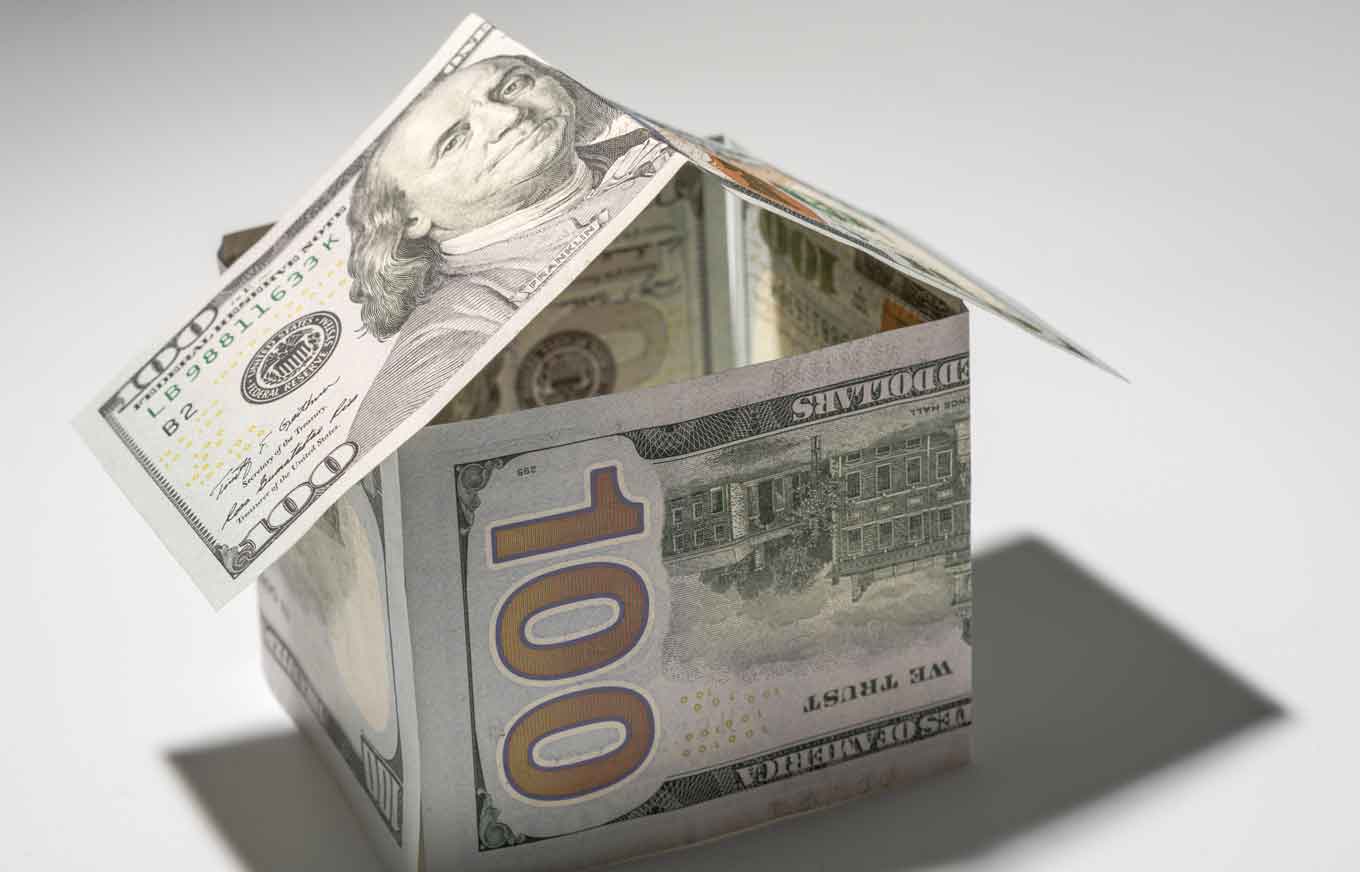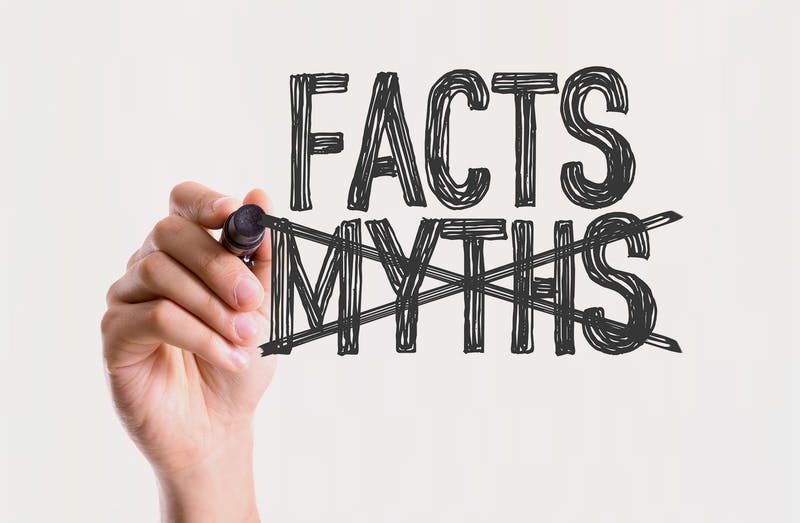
Buying a Home While in Chapter 13 Bankruptcy
Table of Contents
Navigating the complexities of buying a home while amid a Chapter 13 bankruptcy or in its aftermath can seem daunting. However, contrary to common misconceptions, it is indeed possible to qualify for a mortgage under these circumstances. In fact, for some individuals, the process may even be more straightforward compared to those emerging from a Chapter 7 bankruptcy.
Understanding the nuances of Chapter 13 bankruptcy and its implications for obtaining a mortgage is essential for prospective homebuyers seeking to embark on this journey.
What are the Differences Between Chapter 13 and Chapter 7 Bankruptcy?
Chapter 13 bankruptcy entails a court-supervised repayment plan, where individuals work to repay a portion of their debts over a specified period, typically three to five years. Unlike Chapter 7 bankruptcy, which involves the liquidation of assets to discharge debts, Chapter 13 allows debtors to retain their assets while restructuring their obligations. This distinction is significant when it comes to qualifying for a mortgage, as lenders may view Chapter 13 filers more favorably due to their proactive efforts to repay debts.
Despite the potential hurdles associated with Chapter 13 bankruptcy, securing a mortgage is within reach for many individuals. Mortgage lenders are often more lenient towards applicants with a Chapter 13 bankruptcy history compared to those with a Chapter 7 filing. This leniency is attributed to the fact that Chapter 13 filers have demonstrated a commitment to addressing their financial obligations through a court-approved repayment plan. As a result, lenders may be more inclined to extend credit to these borrowers, albeit with certain conditions and requirements in place.
Now, let’s delve deeper into the factors that influence the ability to buy a home during Chapter 13 bankruptcy, including waiting periods, lender requirements, and available mortgage options. By understanding these key considerations, prospective homebuyers can navigate the homebuying process with clarity and confidence, even amidst the challenges posed by Chapter 13 bankruptcy.
Can You Purchase a New Home During Chapter 13 Bankruptcy?
Yes, you can! You can get a mortgage while you are still making payments on your Chapter 13 plan. Government-backed loans like FHA, VA, and USDA mortgages are often more lenient. You can apply for one of these as soon as 12 months into your repayment plan, as long as you’ve been making your payments on time and meet the loan requirements.
Navigating the Home Buying Process
Buying a house while in Chapter 13 bankruptcy involves careful planning, patience, and guidance. Here’s a step-by-step guide to help navigate the process:
- Evaluate your personal finances
- Work with your bankruptcy attorney
- Secure court approval
- Improve your credit
- Get mortgage pre approval
- Begin house hunting and make an offer
- Close on your new home
Tips to Qualify for a Mortgage with Chapter 13
- Re-establish good credit: Pay off debts and make all payments on time.
- Meet lending guidelines: Ensure you meet credit score, income, employment, and down payment requirements.
- Prepare extra documents: Lenders will need copies of your bankruptcy documents.
- Budget for new debt: Remember, your mortgage payment includes taxes, insurance, and possibly mortgage insurance.
Understanding Mortgage Options
Individuals in Chapter 13 bankruptcy have several mortgage options available to them, including FHA, VA, and USDA loans. Each of these options comes with specific requirements and waiting periods, and securing a mortgage often requires court approval, a history of timely payments in the bankruptcy case, and a demonstrated ability to handle new debt.
FHA Loan with Chapter 13 Bankruptcy
To qualify for an FHA loan during Chapter 13, you typically need to be at least 12 months into your repayment plan and have made all payments on time. Additionally, you’ll need written permission from the bankruptcy court or attorney to take out a new mortgage loan. If you successfully complete your repayment plan and receive a Chapter 13 discharge, there’s no waiting period for an FHA loan.
Benefits of an FHA loan include easier credit requirements, requiring only a 580 credit score (credit score requirements may vary by lender) and a 3.5% down payment. Other requirements include a debt-to-income ratio below 50%, purchasing the home as a primary residence, and steady employment and income.
VA and USDA Loans with Chapter 13 Bankruptcy
Similar to FHA loans, VA and USDA loans require individuals to be at least 12 months into their repayment plan with on-time monthly payments and written approval from the court or bankruptcy attorney. If you’ve completed your Chapter 13 plan and received a discharge, there are typically no special criteria to apply for a VA or USDA loan.
Conforming Loans with Chapter 13 Bankruptcy
Conforming loans, however, are more challenging to obtain after filing Chapter 13 bankruptcy. Fannie Mae and Freddie Mac typically require individuals to wait until their bankruptcy has been discharged or dismissed before qualifying for a conventional mortgage. The waiting period may range from two to four years after discharge or dismissal, depending on the circumstances.
Understanding Extenuating Circumstances
Individuals whose bankruptcy was caused by “extenuating circumstances” may have an easier time qualifying for a mortgage after Chapter 13 discharge. Extenuating circumstances refer to one-time events outside your control, such as severe illness, company layoffs, or the death of the primary wage-earner. In such cases, the waiting period for a conventional loan may be reduced to two years after dismissal.
Lenders That Work with Chapter 13
VA, USDA, and FHA loans are available during Chapter 13. Major lenders can offer FHA and VA loans, but USDA loans might be harder to find. Always shop around for the best interest rate and a lender willing to approve you. Consider seeking out specialized mortgage bankers who specialize in working with clients with unique financial circumstances, including those in Chapter 13 bankruptcy. Utilize online resources in your search, and work closely with your bankruptcy attorney.
Waiting Periods for Different Loans
Here’s a quick look at how long you need to wait before you can apply for a mortgage after filing for Chapter 13:
- Government-backed loans (FHA, VA, USDA): 12 months into your repayment plan.
- Conventional loans: Only after your Chapter 13 bankruptcy is discharged or dismissed, with a two-year wait after discharge and four years after dismissal.
Improving Your Chances
Even though it’s possible, getting a mortgage during Chapter 13 bankruptcy comes with extra steps. It’s necessary to show mortgage lenders that you’ve been managing your debt well and improving your credit. Here’s how different loan types view your Chapter 13 status:
| Chapter 13 Status | Loan Program | Waiting Period |
| Filed | FHA, VA, USDA | 12 months |
| Filed | Conventional | Not allowed |
| Discharged | FHA, VA, USDA | None |
| Discharged | Conventional | Two years |
| Dismissed | FHA, VA, USDA | 12 months |
| Dismissed | Conventional | Four years |
| Dismissed (extenuating circumstances) | Conventional | Two years |
Working with Bankruptcy Attorneys
A bankruptcy lawyer can guide you through the process, helping with court approvals and ensuring all paperwork is accurately completed and submitted on time.
Being comfortable working with a bankruptcy attorney is important, so doing your due diligence while choosing one is a must. Here are a few tips on how to choose a good bankruptcy attorney.
- Research Online: Start by conducting online research to identify bankruptcy lawyers in your area who specialize in Chapter 13 bankruptcy cases. Look for lawyers with positive reviews and testimonials from past clients.
- Seek Recommendations: Ask friends, family members, or colleagues who have gone through bankruptcy proceedings for recommendations. Personal referrals can provide valuable insights into the quality of legal services offered by a lawyer.
- Check Bar Association Listings: Consult your state’s bar association website to find a directory of licensed bankruptcy lawyers in your area. Verify the credentials and disciplinary history of potential lawyers through these listings.
- Schedule Consultations: Once you’ve compiled a list of potential candidates, schedule initial consultations with each lawyer to discuss your case. Use this opportunity to assess their expertise, communication style, and approach to handling bankruptcy cases.
- Inquire About Experience: During the consultation, inquire about the lawyer’s experience specifically in handling Chapter 13 bankruptcy cases. Ask about their success rate, familiarity with local bankruptcy laws, and their approach to representing clients in similar situations.
- Evaluate Communication Skills: Pay attention to how effectively the lawyer communicates complex legal concepts and clarifies any questions or concerns you may have. Choose a lawyer who listens attentively and communicates clearly throughout the process.
- Discuss Fees and Costs: Be transparent about your budget and discuss the lawyer’s fee structure during the consultation. Inquire about upfront costs, retainer fees, and any additional expenses associated with legal representation.
- Assess Comfort Level: Trust your instincts and assess your comfort level with the lawyer during the consultation. Choose a lawyer whom you feel confident and comfortable working with, as open communication and trust are essential in the attorney-client relationship.
- Request References: If possible, request references from past clients or colleagues who have worked with the lawyer. Hearing about their firsthand experiences can provide valuable insights into the lawyer’s professionalism, effectiveness, and dedication to client satisfaction.
- Review Contract Carefully: Before retaining the services of a bankruptcy lawyer, carefully review the terms of the engagement contract. Ensure that all fees, services, and expectations are clearly outlined and documented in writing to avoid misunderstandings later on.
Getting Court Approval
To secure a mortgage during Chapter 13 bankruptcy, obtaining court approval is a crucial step in the process. Your bankruptcy attorney will play a pivotal role in facilitating this approval by filing a motion with the court on your behalf. This motion serves to inform the court of your intention to take on new debt in the form of a mortgage for purchasing a home. The motion will contain comprehensive details outlining various aspects of the proposed mortgage arrangement, ensuring transparency and accountability throughout the process. Here’s what the motion typically includes:
- Explanation of Intent: The motion will clearly articulate your intention to acquire a mortgage for the purchase of a home while undergoing Chapter 13 bankruptcy.
- Details of the Mortgage: It will provide detailed information regarding the terms of the mortgage, including the purchase price of the home, the loan amount, interest rate, and the projected monthly mortgage payments.
- Assessment of Financial Impact: The motion will assess the financial impact of the proposed mortgage on your existing repayment plan under Chapter 13 bankruptcy. This includes demonstrating how the new debt will be incorporated into your budget and repayment schedule without disrupting the existing plan.
- Demonstration of Affordability: You’ll need to demonstrate to the court that you can afford the new mortgage payments alongside your existing financial obligations and expenses. This may involve providing evidence of stable income, budgeting projections, and financial statements.
- Mitigation of Risks: The motion will address any potential risks associated with taking on new debt during Chapter 13 bankruptcy and outline strategies to mitigate these risks. This may include contingency plans in case of unforeseen financial challenges.
- Confirmation of Court Oversight: Lastly, the motion reaffirms the court’s jurisdiction and oversight over the proposed mortgage arrangement. It emphasizes the commitment to transparency and compliance with the bankruptcy laws and regulations.
Overall, the objective of filing this motion is to convince the court that acquiring a mortgage is a prudent financial decision that aligns with your rehabilitation efforts and does not undermine the objectives of your Chapter 13 repayment plan.
Improving Your Credit
While waiting for court approval, it’s important to work on boosting your credit score. Pay off existing debts, avoid taking on new debt, and make all payments on time. A better credit score can help you secure a lower mortgage interest rate.
There are several ways you can work on actively improving your credit score.
- Check Your Credit Report Regularly: Start by obtaining a copy of your credit report from each of the major credit bureaus – Equifax, Experian, and TransUnion. Review your reports for any errors, such as inaccuracies in your personal information or accounts that don’t belong to you. Dispute any discrepancies promptly to ensure your credit report reflects accurate information.
- Pay Your Bills on Time: Payment history is one of the most significant factors influencing your credit score. Make it a priority to pay all your bills on time, including credit card payments, loans, and utility bills. Setting up automatic payments or reminders can help you stay on track and avoid late payments.
- Reduce Credit Card Balances: High credit card balances relative to your credit limit can negatively impact your credit score. Aim to keep your credit card balances low and pay off any outstanding debts as soon as possible. Consider creating a repayment plan and focus on paying off high-interest debts first.
- Limit New Credit Applications: Every time you apply for new credit, a hard inquiry is added to your credit report, which can temporarily lower your score. Be selective about applying for new credit and only do so when necessary. Multiple inquiries within a short period can signal to lenders that you’re a high-risk borrower.
- Diversify Your Credit Mix: Having a mix of different types of credit accounts, such as credit cards, installment loans, and a mortgage, can positively impact your credit score. If you don’t already have a variety of credit accounts, consider diversifying your credit mix over time, but avoid opening multiple accounts all at once.
- Keep Old Accounts Open: The length of your credit history is another factor that affects your credit score. Keep older accounts open, even if you’re not actively using them, as they contribute to the length of your credit history. Closing old accounts can shorten your credit history and potentially lower your score.
- Become an Authorized User: If you have a trusted friend or family member with a healthy credit history, consider becoming an authorized user on one of their accounts. Being added as an authorized user can help you establish or improve your credit history, as long as the primary account holder maintains responsible credit habits.
- Keep track of your credit score by using free credit monitoring services or through your credit card issuer. Monitoring your score regularly allows you to track your progress and identify any changes or discrepancies that may require attention.
- Seek Professional Help if Needed: If you’re struggling to improve your credit score on your own, consider seeking assistance from a reputable credit counseling agency or financial advisor. They can provide personalized advice and guidance tailored to your specific financial situation.
Implementing Healthy Financial Habits
Since you are already working on your financial health and improving your credit, now is also a good time to revisit the basics of good budgeting. Budgeting is like the GPS for your finances – it helps you stay on track and reach your money goals without getting lost along the way. So, let’s break down the basics of budgeting in plain and simple terms.
First, figure out your exact income per month–don’t forget to add in any side hustles. Once you’ve got that number, it’s time to divide it up into different pots: one for bills, another for groceries, and don’t forget to add in miscellaneous expenses, like dining out or hitting the movies. If you’ve got kids, make sure you add in all the expenses for each child–childcare and schooling, extracurricular activities, clothing, supplies, camp, etc.
Once you have a final amount for your monthly income and expenses, it’s time to dive deep into where your money goes consistently.
Here are a few tips on how to rein in overspending:
- Track Your Spending: Start by keeping tabs on where your money is going. This could mean jotting down every purchase in a notebook or using budgeting apps that categorize your expenses. The key is to get a clear picture of your spending habits so you can identify areas where you tend to splurge unnecessarily.
- Set a Budget: Once you know where your money is going, it’s time to create a budget. Allocate specific amounts to different categories like groceries, dining out, entertainment, and savings. Be realistic but also aim to trim any excess fat from your spending.
- Identify Triggers: Think about what prompts you to overspend. Is it stress, boredom, or peer pressure? Identifying these triggers can help you find healthier ways to cope without reaching for your wallet.
- Practice Delayed Gratification: Before making a purchase, give yourself some time to think it over. Ask yourself if you really need the item or if it’s just a spur-of-the-moment impulse buy. Delaying gratification can help curb impulse spending and ensure that your purchases are thoughtful and intentional.
- Use Cash Instead of Cards: It’s easy to swipe your card without really feeling the impact of your purchases. Try using cash for discretionary spending instead. When you see the physical money leaving your wallet, you may be more mindful of how much you’re spending and less likely to overspend.
- Shop with a List: Whether you’re grocery shopping or hitting the mall, always go in with a list and stick to it. This helps prevent impulse buys and keeps you focused on purchasing only what you need.
- Find Cheaper Alternatives: Look for ways to cut costs without sacrificing quality. This could mean buying generic brands instead of name brands, shopping sales and using coupons, or finding free or low-cost activities for entertainment.
- Set Savings Goals: Having specific savings goals can give you a reason to cut back on unnecessary spending. Whether you’re saving for a vacation, emergency fund, or retirement, having a clear goal in mind can motivate you to resist the temptation to overspend.
- Practice Mindful Spending: Before making a purchase, pause and ask yourself if it aligns with your values and priorities. Will it bring you long-term satisfaction or is it just a fleeting pleasure? Being mindful of your spending can help you make more intentional choices that support your financial goals.
- Reward Yourself (in Moderation): Cutting down on overspending doesn’t mean depriving yourself of all fun. It’s okay to treat yourself occasionally, but do so in moderation and within the confines of your budget. Set aside a small portion of your budget for discretionary spending and use it to reward yourself for sticking to your financial goals.
Actively working on improving your credit score, focusing on your financial health, and mindful budgeting will give you more confidence as you continue on your path to securing mortgage pre-approval and becoming a homeowner.
Mortgage Pre-approval
Reaching out to an experienced bankruptcy lender should be your first step in the journey toward homeownership during Chapter 13 bankruptcy. Here’s a revised and expanded overview of the process:
Step 1: Selecting a Lender
Begin by researching and selecting a reputable lender with experience working with individuals in Chapter 13 bankruptcy. Look for lenders who specialize in providing mortgages to borrowers with unique financial circumstances.
Step 2: Consulting with the Lender
Schedule a consultation with the lender to discuss your financial goals, home-buying objectives, and any specific concerns related to your Chapter 13 bankruptcy. This initial meeting allows you to establish a rapport with the lender and gain insights into the pre-approval process.
Step 3: Gathering Financial Documents
Prepare all necessary financial documents, including proof of income, tax returns, bank statements, and details of any existing debts or financial obligations. These documents will provide the lender with a comprehensive understanding of your financial situation.
Step 4: Obtaining Court Approval
Before proceeding further, obtain court approval for taking on new debt during your Chapter 13 bankruptcy. This step is crucial as it provides legal permission to pursue a mortgage.
Step 5: Completing the Pre-Approval Application
Once you’re ready to proceed, complete the pre-approval application provided by the lender. This application will require detailed information about your income, assets, debts, and credit history. Be thorough and accurate when filling out the application to ensure a smooth process.
Step 6: Undergoing Financial Assessment
The lender will conduct a thorough assessment of your financial information to determine your eligibility for a mortgage. This assessment includes verifying your income, assessing your debt-to-income ratio, and evaluating your creditworthiness.
Step 7: Receiving Pre-Approval Letter
If you meet the lender’s pre-approval criteria, you’ll receive a pre-approval letter stating the amount they’re willing to lend you for a mortgage. This letter serves as a formal confirmation of your eligibility and provides a clear indication of your purchasing power.
Step 8: Understanding Loan Terms
Review the terms and conditions outlined in the pre-approval letter carefully. Pay close attention to the loan amount, interest rate, loan term, and any other relevant details. Seek clarification from the lender if you have any questions or concerns.
Step 9: Exploring Home Options
Armed with your pre-approval letter, you can begin exploring homes within your budget and price range. The pre-approval letter gives you a realistic idea of what homes you can afford, allowing you to focus your search on properties that align with your financial capabilities.
Step 10: Enhancing Seller Confidence
Having a pre-approval letter in hand not only helps you identify suitable homes but also makes you a more attractive buyer in the eyes of sellers. Sellers are more likely to take your offer seriously and consider you a qualified and reliable candidate for purchasing their property.
By completing the pre-approval process, you’re not only gaining valuable insights into your home-buying potential but also positioning yourself as a serious and credible buyer in the competitive real estate market. This proactive step lays the foundation for a smoother and more efficient homebuying experience, empowering you to navigate the complexities of purchasing a home during Chapter 13 bankruptcy with confidence and clarity.
Finding the Right Home
With your pre-approval in hand, you can officially start house hunting. It’s important to keep all costs in mind:
Purchase Price:
- The cost of the home itself is one of the most significant expenses to consider.
- Take into account the asking price and whether it aligns with your budget and financial goals.
Down Payment:
- Most home purchases require a down payment, typically a percentage of the purchase price.
- Consider how much you can afford to put down and how it will impact your overall budget.
Closing Costs:
- Closing costs include various fees and expenses associated with finalizing the home purchase.
- These may include loan origination fees, appraisal fees, title insurance, and attorney fees.
Property Taxes:
- Property taxes are annual taxes imposed by local governments based on the assessed value of the property.
- Research the property tax rates in the area where you’re considering buying and budget accordingly.
Homeowners Insurance:
- Homeowners insurance protects your home and belongings against damage or loss from covered events.
- Obtain quotes from insurance providers to estimate the cost of coverage for the property you’re interested in.
Mortgage Payments:
- If you’re financing the purchase with a mortgage, consider the monthly mortgage payments.
- Factor in the loan amount, interest rate, and loan term to estimate your monthly payment.
Home Maintenance and Repairs:
- Owning a home comes with ongoing maintenance and repair costs.
- Budget for routine maintenance tasks, such as landscaping, HVAC servicing, and pest control, as well as unexpected repairs.
Homeowners Association (HOA) Fees:
- If the property is part of a homeowners association, there may be monthly or annual HOA fees.
- These fees typically cover shared expenses such as community amenities, maintenance, and landscaping.
Utilities:
- Consider the cost of utilities, including electricity, water, gas, and internet, when budgeting for homeownership.
- Research average utility costs in the area to get an idea of what to expect.
Moving Expenses:
- Don’t forget to budget for moving expenses, including hiring movers, renting a truck, or purchasing packing supplies.
- Factor in any travel costs if you’re relocating to a new area.
Renovations or Upgrades:
- If the home requires renovations or upgrades, budget for the cost of materials, labor, and permits.
- Consider prioritizing essential renovations and budgeting for others over time.
Contingency Fund:
It’s essential to have a contingency fund set aside for unexpected expenses or emergencies.
Aim to save a percentage of your home’s value to cover unforeseen costs that may arise.
By considering these costs upfront, you can make a more informed decision about whether a particular home is within your budget and financial means. Once you find the right home, make an offer, and move on to the closing process, which finalizes your mortgage.
Closing on Your Home
After finalizing all the paperwork and securing your mortgage, you can close on your new home and start your journey as a homeowner! The closing process on your new home is the final step in the home buying journey, where all the necessary paperwork is signed, funds are transferred, and ownership of the property is officially transferred from the seller to the buyer. Here’s an overview of what to expect during the closing process:
- Finalize Financing: Before the closing date, ensure that your mortgage financing is in place and that you have secured a loan commitment from your lender. Review the loan documents carefully and address any questions or concerns with your lender.
- Schedule the Closing: Coordinate with your lender, real estate agent, and closing agent or attorney to schedule a date and time for the closing meeting. The closing typically takes place at a title company’s office, attorney’s office, or another neutral location.
- Review Closing Disclosure: Prior to the closing, you’ll receive a Closing Disclosure, which outlines the final terms of your loan, including the loan amount, interest rate, closing costs, and other fees. Review this document carefully with your lender to ensure accuracy and compare it to the Loan Estimate provided earlier in the process.
- Bring Necessary Documents: On the day of closing, bring a valid photo ID, proof of homeowner’s insurance, and any additional documents requested by your lender or closing agent. This may include a cashier’s check or wire transfer for the closing costs and down payment.
- Sign Legal Documents: At the closing meeting, you’ll sign a variety of legal documents, including the mortgage note, deed of trust or mortgage, and various disclosures. The closing agent or attorney will explain each document and answer any questions you may have.
- Pay Closing Costs: You’ll be responsible for paying closing costs, which typically include lender fees, title insurance, appraisal fees, and prepaid taxes and insurance. These costs are outlined in the Closing Disclosure and must be paid before the transaction can be completed.
- Transfer of Funds: Once all documents are signed and closing costs are paid, funds are transferred from the lender to the seller, and ownership of the property is officially transferred to you, the buyer. The deed and mortgage documents are recorded with the appropriate county or municipal office.
- Receive Keys: Congratulations, you’re now a homeowner! After the closing process is complete, you’ll receive the keys to your new home and can officially take possession of the property.
- Post-Closing Tasks: After closing, there are still a few tasks to complete, such as updating your address with utility companies, setting up homeowners insurance, and transferring utilities into your name. Be sure to follow up on any outstanding items to ensure a smooth transition into your new home.
FAQs
Can you sell a house while in Chapter 13?
- Yes, you can sell a house while in Chapter 13 bankruptcy, but it requires approval from the bankruptcy trustee overseeing your case. The trustee plays a crucial role in ensuring that the terms of the sale are in the best interest of your creditors and that the proceeds from the sale are appropriately distributed according to the terms of your repayment plan. Before proceeding with the sale, it’s essential to consult with your bankruptcy attorney and obtain approval from the trustee to avoid any potential complications or violations of bankruptcy regulations.
Do you need trustee approval to buy a home?
- Yes, trustee approval is typically required before purchasing a home while in Chapter 13 bankruptcy. The trustee must review and evaluate the proposed home purchase to ensure that it aligns with your overall financial situation and repayment plan. The primary concern of the trustee is to ensure that acquiring a new home will not disrupt your ability to fulfill your obligations under the Chapter 13 plan. To obtain trustee approval, you may need to provide documentation related to the home purchase, including the purchase price, financing details, and projected impact on your budget and repayment schedule.
What types of mortgages are available?
- Several types of mortgages are available for individuals in Chapter 13 bankruptcy, each with its own set of requirements and waiting periods. Government-backed loans, such as FHA (Federal Housing Administration), VA (Department of Veterans Affairs), and USDA (United States Department of Agriculture) loans, are popular options. FHA loans are insured by the federal government and may be accessible to borrowers with less-than-perfect credit or limited down payment funds. VA loans are available to eligible veterans, active-duty service members, and certain surviving spouses and offer favorable terms, including no down payment requirement. USDA loans are designed for low-to-moderate-income homebuyers in eligible rural areas and offer competitive interest rates and flexible eligibility criteria.
How long after Chapter 13 can I get an FHA loan?
- You may be eligible to apply for an FHA loan during your Chapter 13 bankruptcy plan, provided you have made at least 12 months of on-time payments and obtained court approval. FHA loans offer a pathway to homeownership for borrowers with past financial challenges, including bankruptcy, and may provide more lenient qualification criteria compared to conventional mortgages. However, it’s important to note that individual lender requirements may vary, so it’s advisable to consult with a mortgage professional to assess your eligibility and explore your options.
Do you need to wait for discharge to qualify for a mortgage?
- While waiting for the discharge of your Chapter 13 bankruptcy may be preferable, it is not always necessary to qualify for a mortgage. Certain mortgage programs, such as FHA and VA loans, may be available to borrowers as early as 12 months into the repayment plan, provided they meet specific requirements and obtain court approval. However, the timing of your home purchase in relation to your bankruptcy proceedings should be carefully considered, taking into account factors such as your financial stability, creditworthiness, and ability to afford home ownership expenses.
Can you buy a house immediately after discharge?
- While it is technically possible to buy a house immediately after the discharge of your Chapter 13 bankruptcy, it’s essential to assess your financial situation carefully and consult with a knowledgeable lender or financial advisor before proceeding. Purchasing a home immediately after bankruptcy discharge may present certain challenges and considerations, including the need to rebuild your credit, demonstrate financial stability, and secure favorable mortgage terms. Additionally, factors such as the availability of down payment funds, employment stability, and debt-to-income ratio should be carefully evaluated to determine your readiness for homeownership. Working with experienced professionals can help you navigate the complexities of post-bankruptcy home buying and make informed decisions that align with your long-term financial goals.
Conclusion
Having a Chapter 13 bankruptcy in your credit history doesn’t mean you can’t buy a home or refinance your mortgage. You might still be able to buy a house during Chapter 13 bankruptcy if you’re in good standing with your repayment plan and meet the loan qualifications.
However, remember that bankruptcy affects your credit score. Even though some lenders will offer home loans to bankrupt buyers after a year, you might need more time to rebuild your credit.
If you’ve been diligently paying down debts and improving your financial situation during Chapter 13, you could qualify for a home loan sooner than you’d expected.






